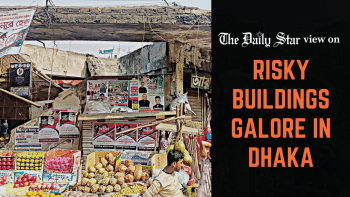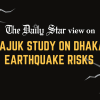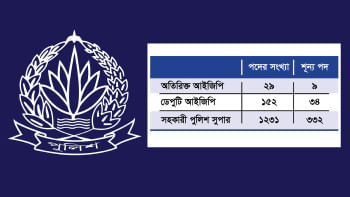Rajuk must lead drive on risky buildings

A series of accidents in recent times have brought to light how vulnerable many buildings in Dhaka are to fires, explosions or collapses. Given the general disregard for building and fire safety regulations and the lack of enforcement by responsible authorities, questions can be asked about the electrical and structural safety of most buildings. However, one threat that is not talked about enough is their vulnerability to earthquakes, which, in a region considered highly vulnerable to quakes, should worry us.
According to a recent report by Prothom Alo, there are at least 41 highly vulnerable public buildings in areas under the jurisdiction of Rajuk: 23 in Dhaka, three in Gazipur, six in Savar, eight in Narayanganj, and one in Keraniganj. These have been identified after Rajuk, through its Urban Resilience Project, conducted a rapid visual screening of 3,252 buildings of government, semi-government and autonomous institutions. Those identified as highly risky following a subsequent preliminary engineering assessment (PEA) of 579 of all buildings need to be demolished. The question is, who will take the initiative?
Although Rajuk hasn't made public the list of the 41 buildings, for reasons yet to be explained, we come to know about them from the report. Apparently, the authorities of those buildings are unlikely to demolish them of their own volition, but neither will Rajuk. Rajuk feels it has done its part by conducting the assessments and sending letters to the concerned institutions to vacate and demolish all dangerous buildings. We understand that demolishing entire buildings and relocating to safer alternatives are no easy task. There are also administrative challenges that can get in the way. But this has to be done, sooner rather than later. And as the central authority on development in this region, Rajuk must play a leading role in any demolition drive.
We have previously seen how lack of initiative, collaboration and coordination among government institutions can delay or undo vital, life-saving interventions. For example, over the last two decades, a total of 19 kitchen market buildings in Dhaka were identified as risky, yet those continue to be in operation to this day. Of them, nine are under the DNCC, and 10 under the DSCC. Despite promising to phase them out and relocate shops to new buildings, the city corporations have done little so far beyond putting up signboards. Millions continue to visit these establishments at great personal risk. Who will take responsibility in the event of a collapse or any other tragedy?
The standard response, after every tragedy, remains a mix of blame game and fruitless promises of action, but hardly anything concrete is done to prevent the recurrence of tragedies. Just imagine: In 2018, there were 19,642 fires in Dhaka. The number rose to 24,102 last year. If you add earthquake vulnerability to the equation, this city is literally strewn with ticking time bombs. Given the multidimensional safety challenge facing many of its buildings, we urge the government to take the safety issue seriously, as well as our unplanned urbanisation which is causing the threats in many cases, and make decisive interventions. There is no alternative to proactive measures at this stage.


 For all latest news, follow The Daily Star's Google News channel.
For all latest news, follow The Daily Star's Google News channel. 








Comments